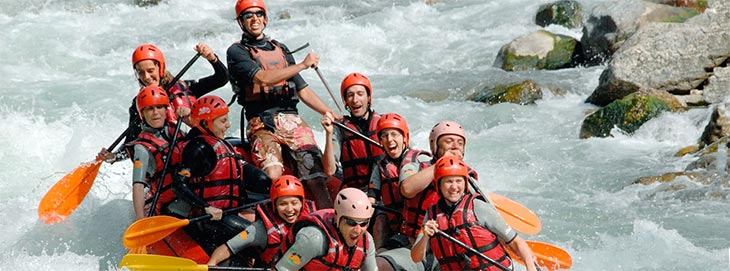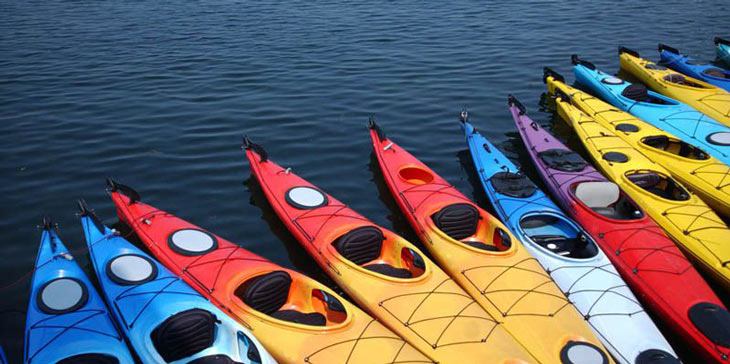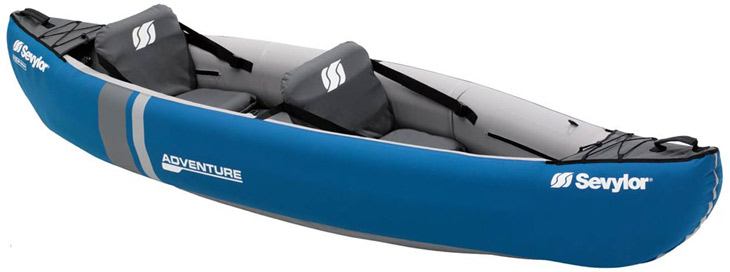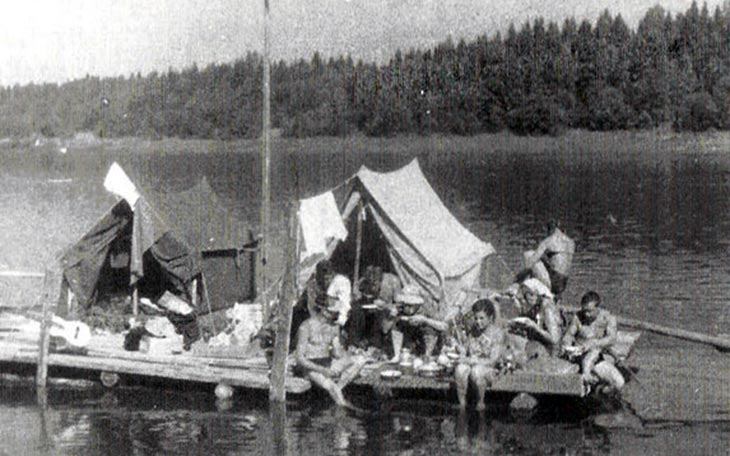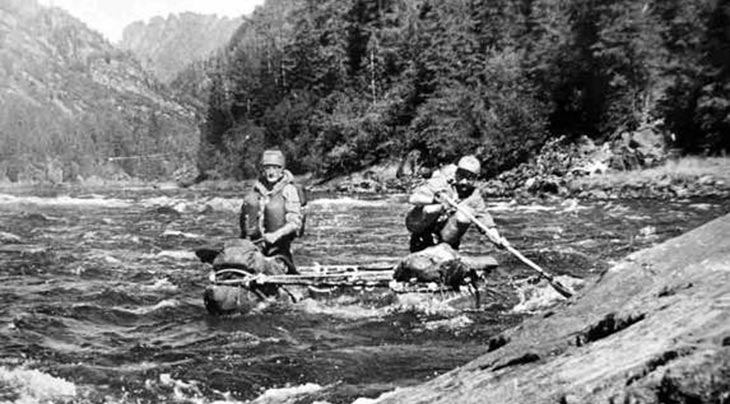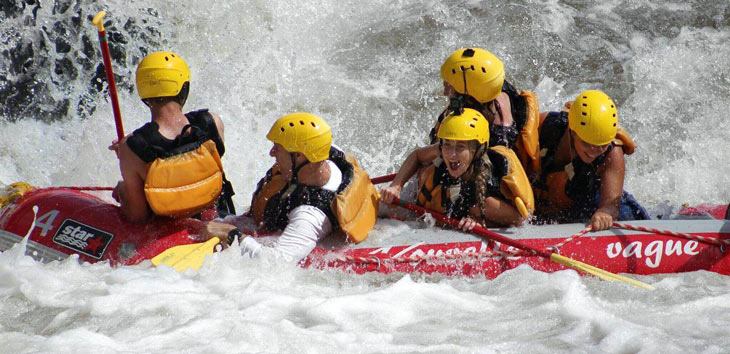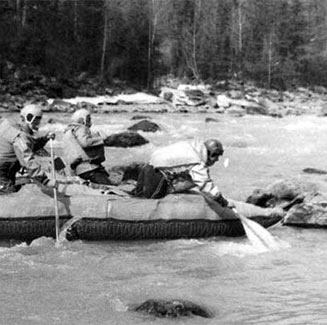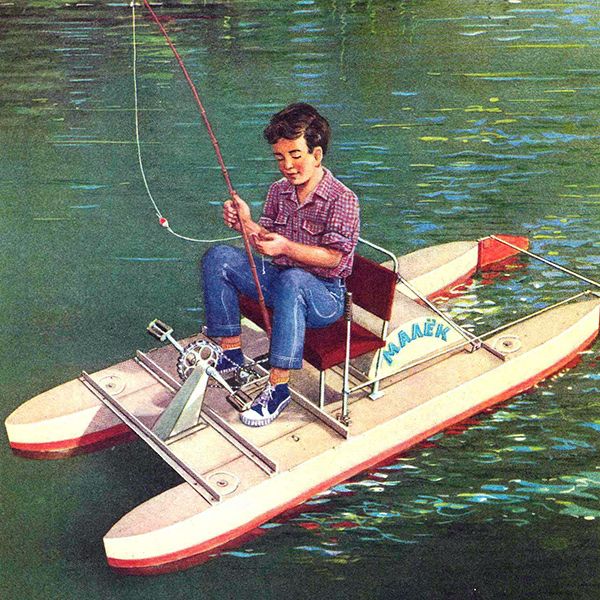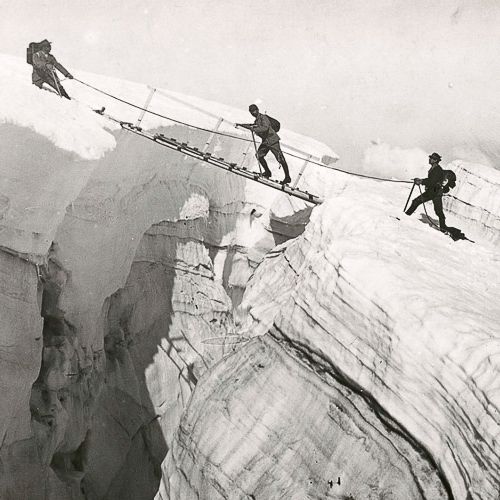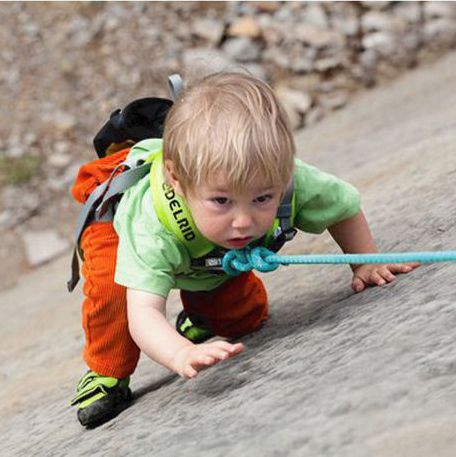Tourists from Ukraine, Russia, and Belarus are quite fortunate — a vast number of rivers and lakes provide endless opportunities for engaging in water tourism in every region.
This discipline develops teamwork skills, strength, endurance, concentration, and self-control. As part of eco-tourism, it has minimal environmental impact (unless riverbeds are disrupted for commercial tours). The goal is to navigate a route consisting of a section of a river, reservoir, lake, or a combination of several water bodies.
Types of Water Tourism
The sheer variety of water-based extreme sports complicates clear classification. In specialized literature, this category includes everything from diving to sport fishing. Here, I will focus on classification based on the means of navigation.
Rafting
Rafting trips on inflatable rafts have gained phenomenal popularity over the past fifty years. Soviet water tourists first encountered a raft in 1989 during the Soviet-American competition “Project Raft,” and, surprisingly, our team emerged victorious. They repeated their victory the following year in the U.S. Since 1997, rafting has been represented by its international federation, IRF .
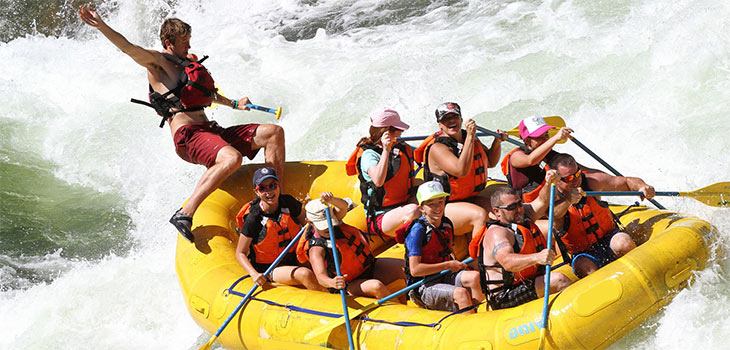 Rafting as a Type of Water Tourism
Rafting as a Type of Water Tourism
Six- to eight-person inflatable rafts, or “rafts,” differ significantly from other rowing boats, requiring unique maneuvering techniques such as punching, high-siding, low-siding, downstream flips, darksiding, and more.
Where there is the possibility of transport to and from the route, and a need to carry substantial equipment, an inflatable raft is the ideal solution. This is why it’s so popular among commercial tour organizers.
Rafting in New Zealand. One can only envy these guys.
Multiseater rafts are less maneuverable in shallow rivers, making it harder to navigate twists and narrow rapids. Under certain conditions, a catamaran might be a better alternative.
Kayaking, Canoeing, and Canoe-Based Rafting
Narrow, smaller watercraft are less popular than rafting as they require specialized skills to manage.
Single-seat sealed kayaks are ideal for calm waters, and experienced paddlers can also handle whitewater with ease. The main features of a kayak are limited cargo capacity and relatively large dimensions, complicating transport and use for extended trips. For more on canoeing adventures, check out the article Kayaking for Beginners .
Narrow, lightweight tourist boats come in dozens of varieties: collapsible and non-collapsible, inflatable, wooden, foldable, ultralight, heavy-duty, with sail installations, and more. Collapsible boats are convenient for transport but otherwise perform as well as monolithic designs. The longer and narrower the boat, the faster it is, but turbulent rapids call for shorter, more maneuverable designs.
Open canoes are more versatile and cargo-friendly compared to kayaks but are slower and less maneuverable. Inflatable canoe models, capable of navigating overgrown river backwaters, are even available. Canoes are slightly harder to stabilize because the paddler’s center of gravity is above the water. However, for calm river journeys, they offer several advantages, such as ample storage capacity and seating for 2-4 people, with constant access to belongings. Starting with a canoe is a good choice for initial water excursions.
Catamaran Rafting
Within this web magazine, a series of articles has been published exploring catamaran rafting. This comprehensive topic encompasses the history of water tourism across entire eras, as discussed in the article The History of Catamaran Development .
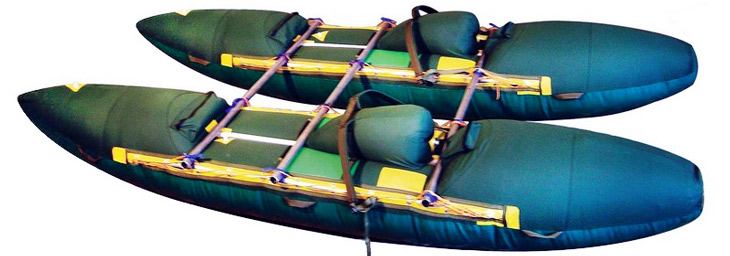 Catamaran for Water Trekking
Tourist catamarans most often consist of two inflatable gondolas on a lightweight frame and have 2–4 seating places (rarely up to 8). The advantages of these vessels include compactness in their disassembled state, shallow draft and speediness, a huge variety of models, and the ability to carry substantial equipment. They are suitable for both calm and turbulent rivers, are stable, safe, and well-adapted for transportation. A deck can be placed between the gondolas, a sail can be installed, or a motor mount attached. Modern catamarans are the best alternative to rafts.
Catamaran for Water Trekking
Tourist catamarans most often consist of two inflatable gondolas on a lightweight frame and have 2–4 seating places (rarely up to 8). The advantages of these vessels include compactness in their disassembled state, shallow draft and speediness, a huge variety of models, and the ability to carry substantial equipment. They are suitable for both calm and turbulent rivers, are stable, safe, and well-adapted for transportation. A deck can be placed between the gondolas, a sail can be installed, or a motor mount attached. Modern catamarans are the best alternative to rafts.
Yachting and Sailing Tourism
One of the most exciting and technical types of water tourism is sailing in coastal marine waters and on inland waterways. To enjoy a sailing trip, it is necessary to understand the physics of currents and wind and to always keep the vessel under control.
Maritime yachting adheres to the International Regulations for Preventing Collisions at Sea ( COLREG ). On inland waters, similar regulations may apply, such as the European CEVNI Rules.
Even a canoe can be adapted for sailing — Polynesians successfully traveled in such vessels a thousand years ago. However, it cannot be said that yachting and sailing are accessible to everyone. Handling a boat at the mercy of three elements is not for beginners. Even sailing in good weather and protected calm waters can be hazardous — the weather can change quickly, and controlling a small vessel is no easy task.
Conclusion: Vessels for tourist rafting can vary. The main thing is that they correspond to the difficulty of the route and are manageable by the participants.
For water tourism, ease of transportation and the load capacity of the vessel are important considerations. For example, carrying an 80-kilogram packed raft may be inconvenient, yet it can transport the gear of all passengers. Sometimes, reaching the starting point involves train travel followed by additional car transfers (in the best-case scenario), so it’s helpful if the vessels are collapsible and easily distributed among the crew’s backpacks. Catamarans, kayaks, and inflatable kayaks are good choices in this regard.
Equipment and Gear
Depending on the watercraft, the equipment and gear of a water tourist have unique features. There are a few particularly important pieces of personal equipment necessary when on the water, worth mentioning as part of general rules:
- Life vest. Even if you’re a professional swimmer, river whirlpools don’t discriminate. In an unforeseen situation on whitewater that leads to unconsciousness, only a life vest can save you.
- Head protection is mandatory during commercial tourist rafting trips. It’s also worth using in “wild” outings. Lightweight and durable helmets are especially relevant when navigating rough rapids on rafts and catamarans.
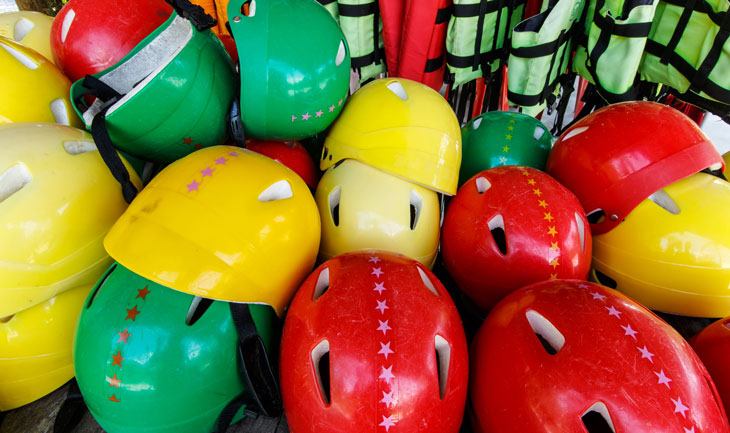 Protective Helmets
Protective Helmets - Wetsuit and storm-proof waterproof suit are indispensable for long journeys. Before wetsuits became widely available, dense polyester tracksuits were popular as they shed water instantly and dried quickly. This is still an option, but a proper wetsuit is preferable.
- Closed lightweight shoes or specialized water shoes. Being barefoot on a vessel or jumping off it is strictly prohibited. Surprisingly, worn-out sneakers with ventilation holes can work well as water trip footwear. The main thing is that water doesn’t pool in them and the foot remains covered.
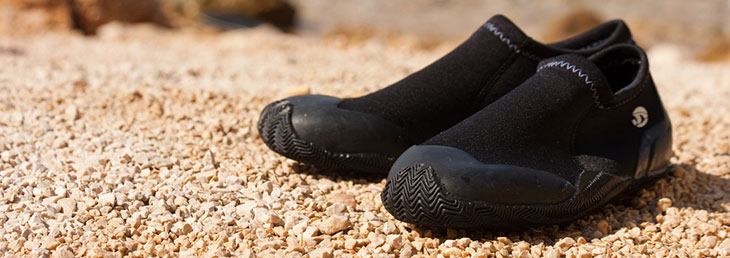 Tourism Shoes
Tourism Shoes - Sweater and woolen socks. It can get very cold on the water, and nights by the water are a separate topic. Do not neglect warm clothing.
- Paddling gloves. Protects against painful blisters, particularly in wet conditions.
- Zip-lock waterproof bags for individually packing spare clothing, documents, matches, a flashlight, repellent, and towels.
- First aid kit: antibiotics for digestive issues, paracetamol, bandages and hemostatic agents, antiseptic, and burn relief.
- Waterproof backpack and sleeping bag.
For more detailed recommendations, I suggest reading Valentin Yevstafyev’s Water Tourist Gear List. Written in the style of travel notes, it’s both witty and useful.
River Difficulty Categories and Routes
There are three international classifications of river difficulty: the International Scale of River Difficulty (American Whitewater), the International Canoe Federation version, and the Deutscher Kanu-Verband system. Russia has developed its own classification. The table for evaluating the difficulty of water obstacles can be found in the Normative Document on Sports and Recreational Tourism, page 102.
Choosing a water body for a rafting trip can turn into an exploration of thematic literature and documentation. Fortunately, enthusiasts have already compiled several such archives , one of which is published in the web journal “Water Tourism of Ukraine.” The archive includes literature on routes from Altai to Yakutia. Previously, we discussed the best rivers for rafting in Russia .
 Literature
It is best to search for interesting routes in old Soviet books, which are abundantly digitized and accessible in electronic format. What makes Soviet books on sports tourism valuable is the abundance of life hacks and well-reviewed information on the subject. Several such editions are listed in the last section.
Literature
It is best to search for interesting routes in old Soviet books, which are abundantly digitized and accessible in electronic format. What makes Soviet books on sports tourism valuable is the abundance of life hacks and well-reviewed information on the subject. Several such editions are listed in the last section.
Safety in Water Excursions
I read the code of ethics by the American Whitewater Organization, and it turned out to be a maximally concise and precise guide on whitewater safety. I suggest you review the code in its original form, and I will share several key points that I particularly liked.
Personal Responsibility:
- Be a competent swimmer capable of managing yourself underwater.
- Always wear a life jacket and helmet.
- Keep your composure in critical situations.
- Remember that the river is cold, fast, and hides dangers beneath its surface.
- Never go alone. The minimum group size is three people.
- Assess risks.
- Practice self-rescue and first aid, including rescue from overturned vessels (e.g., Eskimo roll). Clearly understand the concept of hypothermia.
- Be in good physical and mental condition before starting.
- Do not neglect equipment.
- Take responsibility for your decisions, and avoid endangering yourself or the group members.
- Thoroughly study the watercraft and the route before embarking on the trip.
- Save yourself and the group, not the equipment.
- Avoid dehydration.
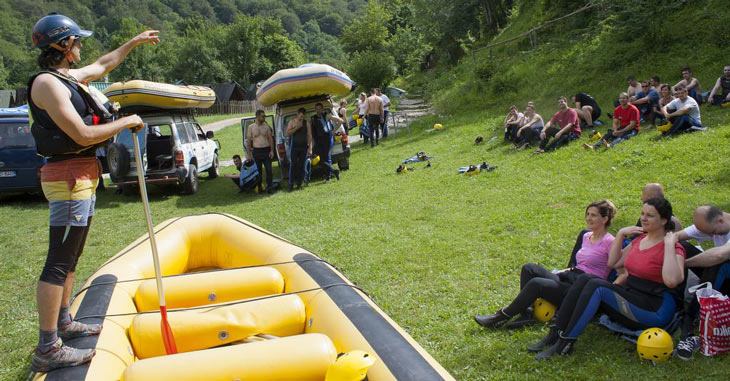 Preparation before rafting. An expedition leader conducts a safety briefing before rafting on rafts.
Preparation before rafting. An expedition leader conducts a safety briefing before rafting on rafts.
History of Water Tourism in Russia
In the post-war years, the water tourism industry began to actively develop, both as planned activities and through personal initiatives. Water tourism is a uniquely Soviet phenomenon.
The “Thaw” Era
In the 1960s, during the so-called “Thaw” period, trips “into the mist and for the scent of the taiga” became especially popular. This was also the time when many talented bards emerged; their songs still resonate around campfires to this day. And, of course, there was the legendary collapsible kayak “Taimen,” which remained the queen of tourism for a long time. Using it, Soviet water enthusiasts began actively exploring rivers that were abundant in the Soviet Union: from simple forest streams typical of the country’s flat regions to threatening roaring torrents that carve their winding paths through mountain ranges.
The Catamaran Era
While challenging routes were of great interest, they were often impassable for kayaks. This prompted the creation of the first sports catamaran in the 1970s. Its inventor was Sergey Papush from Moscow. The vessel was tested on the most difficult rivers of the Soviet Union and demonstrated excellent performance. Since then, the original construction has undergone many changes, and today the catamaran is arguably the most popular watercraft for rafting in the country. Papush’s idea developed in all directions.
Foreign equivalents to our kayaks and catamarans include kayaks and rafts. Kayaks began to appear in the USSR somewhat later than rafts. These vessels gradually started being used, albeit with varying levels of success. The niche for a small one-person sports boat had been unoccupied before the kayak appeared: unlike a collapsible kayak, the plastic one-person kayak allows an experienced athlete to navigate even quite challenging rapids.
The situation with rafts turned out to be a bit more complicated—the niche for a large multi-person watercraft was already occupied by the catamaran. Collapsible vessels were highly convenient for transportation and performed well in any water. Moreover, many enthusiasts learned to sew them themselves. At first, there were no commercial rafts available, and rafts only appeared at competitions.
Modern Water Tourism
After the collapse of the USSR, the industry faced a turning point. It lost state funding, many clubs and sections shut down, and their members temporarily had to put regular trips on hold to cope with the difficulties of the 1990s.
However, there was a silver lining: the most inventive individuals learned to sew their own catamarans and kayaks from makeshift materials, even using truck tarps, often modifying and improving existing designs.
Foreign expertise became accessible, along with new equipment and materials. As soon as the crisis period subsided, water tourism in Russia began to grow rapidly. A new generation of water tourists emerged, raised on the traditions of the old school with its trips and sporting focus, but incorporating modern elements such as competitions, advanced gear, and new types of watercraft.
References and Literature
- “Water Tourism” by E. Romashkov, R. Pyatyshev, V. Filatov, A. Dubrovsky, 1968.
- “The Tourist’s Companion” by Lev Tripolsky, 1959. Guidebook “33 Routes.”
- “Water Sports Trips: How to Manage Their Risks” by V.A. Vetkin, 2014.
- “100 Selected Routes for Kayak Travel” by Y.B. Voronov.
- “On a Kayak – Seeking Power” by G. Aronov, M. Goldstein, 1980.
- “Water Routes of the USSR. Asian Part” by V.N. Grigoryev, V.V. Mitrofanov, 1976.
- “Sports Trips on Rafts” by A.D. Kalikhman, M.Y. Kolchevnikov, 1985.
- Electronic Library on Water Tourism (about 20 publications).
- “Tourist-Waterman Equipment” by V. Grigoryev, 1986.
